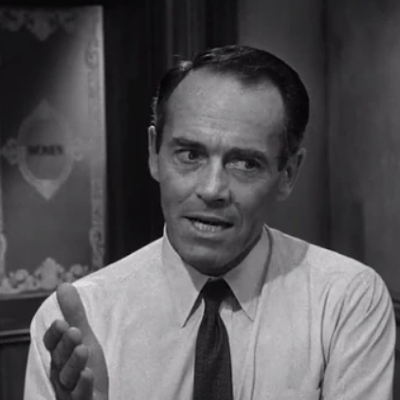After today’s uneventful Fed announcement, all eyes turn to the BOJ where many anticipate some form of “helicopter money” is about to be unveiled in Japan by the world’s most experimental central bank.
However, as Nomura’s Richard Koo warns, central banks may get much more than they bargained for, because helicopter money “probably marks the end of the road for believers in the omnipotence of monetary policy who have continued to press for further accommodation in the midst of a balance sheet recession, when such policies simply cannot work.”
As he continues, believers “have doggedly insisted that it is possible to control inflation because (1) inflation is everywhere and always a monetary phenomenon and (2) central banks control the supply of money. Based on this belief, they have implemented a variety of policies including quantitative easing, negative interest rates, forward guidance, and inflation targeting, each of which has failed to produce expected results. Now they have reached the end of the line, and the signpost reads “Last stop: helicopter money.”
Koo continues to unload on central bankers, slamming their “faith that the economy will pick up if only money is dropped from the sky” that has provided a psychological foundation for economists and policymakers convinced of the efficacy of monetary policy. It also explains why nothing has worked yet. The Nomura strategist then mocks “their belief that dropping money from helicopters would revive the economy that has led them to assume that slightly less extreme policies such as quantitative easing and inflation targeting would also have a positive economic impact (albeit a more modest one).”
This is precisely what we said in March 2009 when the Fed first launched QE, and were mocked. It has now become mainstream.
* * *
We also predicted that the endgame will ultimately be hyperinflation, after an extended period of intermediary steps in which central bankers stumble from one interim, and flawed, “solution” to another, until they finally hit the monetary endgame… which is where we are now.
Koo admits as much by highlighting the paradox of helicopter money (assuming the form it is most likely to be implemented under, i.e., financing of deficits) namely that if and when it is ultimately successful, it will assure hyperinflation. This is how he puts it:
Eventually the private sector will complete its balance sheet repairs and resume borrowing. When that happens, inflation can quickly spiral out of control unless the central bank drains the liquidity it pumped into the market under quantitative easing or helicopter money. For example, excess reserves created by the Fed currently amount to some 15 times the level of statutory reserves.
That implies that if businesses and households were to resume borrowing in earnest, the US money supply could balloon to 15 times its current size, sending inflation as high as 1,500%. The corresponding ratios are 28 times for Japan and Switzerland, five times for the eurozone, and 11 times for the UK.
Once private-sector demand for loans recovers in these countries, confidence in the dollar, euro, and yen will plummet unless the Fed reduces excess reserves to one-fifteenth of their current level, the ECB to one-fifth, and the Bank of Japan to one-twenty-eighth.
So what’s the problem: just soak up reserves, i.e., sell central bank assets?
However, as Koo puts it, “that sort of extreme reduction in reserves will require the central bank to sell the bonds it holds, which would be a nightmare for both the economy and the bond market.”
In short, it would result in a bidless (already illiquid) bond market with yields exploding, and likewise trigger an explosion in inflation as suddenly interest rates go through the roof, countless companies default on their debt, and the value of both debt and credit implode.
* * *
Below we present selected excerpts from Koo’s full “cost-benefit analysis” of helicopter money, and specifically the four forms it could take, and why each of them is ultimately doomed.
1. Dropping money from the sky
A look at the helicopter money debate in Japan and elsewhere shows that the actual policies being discussed can be classified into four main types. The first is helicopter money in the literal sense of dropping money from helicopters. Would this work? In Japan, at least, it would be another complete failure. This is because when the typical Japanese finds a 10,000-yen note lying on the ground, she will turn it in at the nearest police station rather than spend it. Put differently, a helicopter money policy can only work if the people in a country have little sense of right and wrong.
No seller would exchange products for money that fell from the sky
Another critical omission from the argument that helicopter money will resuscitate the economy is that it focuses exclusively on the logic of buyers while ignoring the logic of sellers. Unethical buyers may try to go shopping with money that has fallen from the sky, but there is no reason for sellers to accept such money. Sellers are willing to take money in exchange for goods and services only because the supply of that money is strictly controlled by the central bank. If money starts falling from the sky, sellers will refuse to accept it as payment for their products. If the authorities actually began dropping money from helicopters, shops would either close their doors or demand payment in foreign currency or gold, and the economy would quickly collapse. There is no economy so wretched as one that no longer has a national currency the people trust.
Helicopter money not the ultimate form of monetary accommodation
In light of the above, the argument that monetary policy can be relied upon to boost the economy because helicopter money is the ultimate form of monetary accommodation and always works can be seen to be complete nonsense that ignores the standpoint of sellers. Taking monetary accommodation to those extremes would lead to the economy’s collapse, not its recovery. There is no case in recorded history of an economy without a credible national currency outperforming an economy that has one.
2. Financing government deficits
In response to this criticism, some proponents of helicopter money would probably say that the helicopter money policies now being discussed do not involve actually dropping money from the sky but rather call for direct financing of government fiscal expenditures by the central bank. In this, the second version of helicopter money, the money is supplied in a way that is not immediately visible to ordinary citizens, so it may take time before sellers begin refusing to sell, but the problems that remain are no different from those of quantitative easing.
Financing of fiscal expenditures during balance sheet recession does not stimulate economy
Fiscal stimulus itself can provide a large boost to the economy. But while direct financing by the central bank may increase reserves in the banking system, those reserves will be trapped in the banking system because there are no private-sector borrowers during a balance sheet recession even at zero interest rates. Prime examples include post-1990 Japan and the leading Western economies since 2008. At such times, the “direct” part of the direct financing of fiscal stimulus cannot stimulate the economy or raise inflation any more than the “non-direct” QE. Both growth and inflation have remained at depressed levels in Japan (since 1990) and the West (since 2008) regardless of how accommodative monetary policy has become because the private sector stopped borrowing after the bubble collapse slashed the value of its assets but left its liabilities intact.
Question of how to mop up excess liquidity has not been answered
Eventually the private sector will complete its balance sheet repairs and resume borrowing. When that happens, inflation can quickly spiral out of control unless the central bank drains the liquidity it pumped into the market under quantitative easing or helicopter money. For example, excess reserves created by the Fed currently amount to some 15 times the level of statutory reserves. That implies that if businesses and households were to resume borrowing in earnest, the US money supply could balloon to 15 times its current size, sending inflation as high as 1,500%. The corresponding ratios are 28 times for Japan and Switzerland, five times for the eurozone, and 11 times for the UK. Once private-sector demand for loans recovers in these countries, confidence in the dollar, euro, and yen will plummet unless the Fed reduces excess reserves to one-fifteenth of their current level, the ECB to one-fifth, and the Bank of Japan to one-twenty-eighth.
But that sort of extreme reduction in reserves will require the central bank to sell the bonds it holds, which would be a nightmare for both the economy and the bond market. It would be a different matter if we were talking about future increases in reserves under a helicopter money policy, but the Fed has already created some $2.5trn in excess reserves under quantitative easing, and the BOJ has created ¥250trn, which means the monetary authorities cannot avoid the issue of draining those funds from the market.
3. Government scrip and perpetual zero-coupon bonds
A third version of helicopter money involves government money printing or the replacement of the JGBs held by the BOJ with perpetual zero-coupon bonds. The people proposing these policies hope that fiscal stimulus financed by government scrip or perpetual zero-coupon bonds, which are not viewed as government liabilities, will elicit spending from people who are currently saving because of concerns about the size of the fiscal deficit and the likelihood of future tax increases. Economists refer to this reluctance to spend because of worries about future tax hikes as the Ricardian equivalence. If true, it implies that consumption will increase each time the government raises taxes since higher taxes mean lower deficit in the future. The fact that this phenomenon has never once been observed in the real world suggests it is nothing more than an empty theory.
Moreover, there are serious issues that must be confronted once the economy picks up and the liquidity supplied by the monetary authorities via government scrip or zero-coupon perpetuals must be drained from the system. Perpetual zero-coupon bonds are essentially worthless, which means the BOJ cannot sell them—no one in the private sector would be stupid enough to buy them. That means the only way to mop up the excess reserves created via the issue of perpetual zero-coupon bonds is for the BOJ to ask the MOF to issue equivalent amounts of coupon-bearing bonds. The same would be true when trying to mop up reserves created by government scrip. Once this scrip starts circulating, it becomes part of the monetary base, and draining it from the system will require the government to absorb it by issuing bonds. And in the case of both perpetuals and government scrip, the government that issued the bonds cannot spend the proceeds. If the government spends them, the liquidity that had been mopped up will flow back into the economy again. Those recommending the issuance of government scrip or perpetual zero-coupon bonds say that one advantage of this approach is that it does not lead to an expansion of government liabilities (upon issuance). However, they will become massive government liabilities when the economy eventually recovers and they must be mopped up.
Helicopter money proponents silent on issue of mopping up reserves
In other words, the biggest issue with helicopter money—as with quantitative easing—is the question of how to drain these funds from the system. It becomes clear just how problematic both policies are when the difficulty of draining reserves is taken into account. Yet in all the discussion about helicopter money and quantitative easing in Japan and elsewhere, almost no one has touched on the massive costs involved in mopping up the excess reserves created under these policies. Everyone emphasizes the benefits of these policies when introduced while ignoring that those benefits are small indeed when we examine the costs and benefits over the policy’s lifetime. As one example of this bias, Waseda University professor Masazumi Wakatabe argued in a Nikkei column titled “Easy Economics” that helicopter money is preferable to quantitative easing inasmuch as it enables the government to undertake fiscal stimulus without increasing its liabilities.
I suspect that the helicopter money envisioned by Mr. Wakatabe involves the issuance of government scrip or direct central bank underwriting of perpetual zero-coupon bonds. However, he makes no mention whatsoever of how the liquidity created via these methods will be drained from the system once private-sector demand for loans recovers.
Helicopter money offers no benefits whatsoever over policy’s lifetime
As described above, the only way to mop up liquidity that has been created using these methods is for the government to issue bonds and not spend the proceeds. I think this would be more difficult from both a legal and practical perspective than winding down quantitative easing, which in itself is no easy task. Moreover, the amount of government debt that must ultimately be acquired by the private sector is no different from a case in which the government had issued bonds to fund fiscal stimulus from the outset.
In short, whether fiscal stimulus is funded with government scrip and zero-coupon bonds or with the ordinary issue of government debt, the size of the government’s liabilities will be the same in the end. Helicopter money offers no benefits whatsoever when viewed over the lifetime of the policy, including the eventual need to mop up liquidity.
4. Handing cash directly to consumers
A fourth version of helicopter money involves handing out money directly to consumers, without requiring it to pass through financial institutions. In this scenario, a consumer might open her mailbox one morning to find an envelope from the Bank of Japan containing ¥1mn. While that discovery may bring momentary happiness, I suspect she may feel a chill down her spine once she realizes everyone around her had received similar envelopes. And if such envelopes arrived day after day, the entire country would quickly fall into a panic as people lose all sense of what their currency is worth. Regardless of what buyers might wish to do, sellers would be forced to protect themselves, with stores putting up signs requesting payment in either foreign currency or gold. This is a nightmare scenario.
* * *
Why is helicopter money so popular?
What I find fascinating is why so many pundits in Japan and elsewhere continue to promote policies like quantitative easing and helicopter money while completely ignoring the need to eventually mop up all the liquidity created under these policies. One possibility is that this marks the last stand of the academic economists who have been insisting for the past three decades that monetary policy is the solution to all economic problems. Mr. Wakatabe, for example, declared without irony that “the problem of how to increase nominal GDP always has an answer: helicopter money.” This argument completely ignores sellers’ reactions and the ultimate cost of mopping up excess liquidity. Yet even Mr. Wakatabe acknowledged in the aforementioned Nikkei column that no matter how much money the central bank supplies under quantitative easing, “the money available for people to use will not increase unless financial institutions start lending more.” This statement suggests that the professor has finally realized the shortcomings of monetary policy during a balance sheet recession, something we have been talking about for the last 20 years. And that, in turn, may be why these economists are now leaning in the direction of helicopter money, which could go directly to the households and not depend on financial institutions.
Will private-sector loan demand ever recover?
Another possibility is that these economists are assuming private-sector loan demand will never recover. If that were in fact the case, there would be no need to mop up the liquidity, and consequently no need to worry about the attendant costs. The current economic slump could continue indefinitely if people who had terrible experiences digging themselves out of debt following the asset bubble’s collapse decided they would never again borrow money. In that case there would be no need for the central bank to move quickly to mop up the funds created under quantitative easing and helicopter money. It is extremely difficult to project when the private sector will overcome its debt trauma and resume borrowing, inasmuch as there are few historical instances in which an economy has emerged from a balance sheet recession. But I think it is dangerous to keep quantitative easing and helicopter money policies in place based on the assumption that the current situation will continue forever. After all, success for all policies including helicopter money is defined as a recovery in private-sector demand for loans.

Full story here Are you the author? Previous post See more for Next post
Tags: Bank of Japan,Bond yield,central banks,default,Eurozone,excess reserves,Helicopter Money,hyperinflation,Japan,Monetary Base,Monetary Policy,newslettersent,Nikkei,Nominal GDP,Nomura,Quantitative Easing,recession,recovery




































